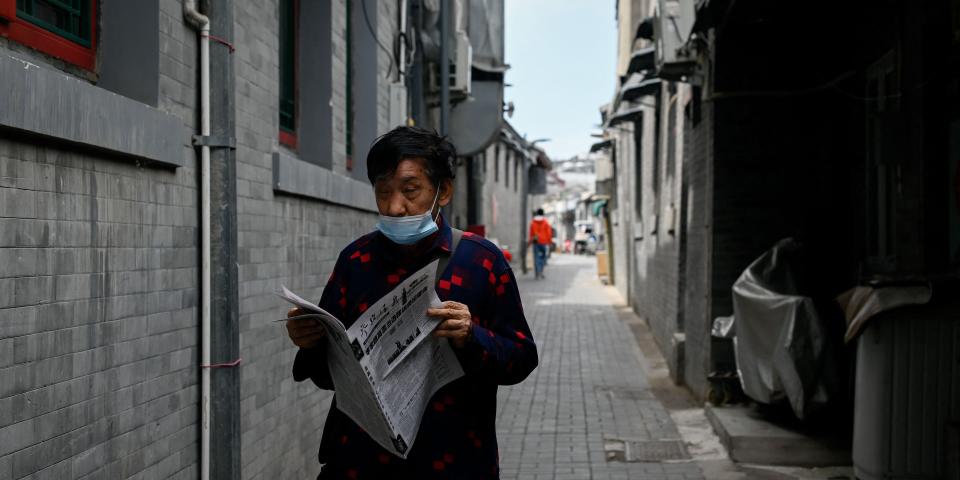

-
China’s post-pandemic rebound has yet to materialize as expected.
-
Home sales growth by top Chinese developers pulled back in May.
-
Manufacturing activity contracted in May, Wednesday data showed.
China’s latest batch of real estate and manufacturing data gave more evidence of a sluggish economy, and further dashed hopes of a rapid post-pandemic rebound for the world’s second-largest economy.
In the property sector, more weakness continues to surface, despite Beijing’s efforts to prop up the market. In May, the value of new home sales from the 100 largest developers climbed 6.7% to 485.4 billion yuan, or $68.3 billion, compared to a year ago. The prior two months saw gains of more than 29%, according to Bloomberg.
Home sales, for their part, dropped 14.3% compared to April.
“The basic picture was one of regression,” Bloomberg analysts Chang Shu and Kristy Hung wrote in a recent note. “Despite signs of steadier activity, though, the sector is still sick.”
China’s property market, which is coming out of a prolonged slump for more than year, makes up about a fifth of the economy.
Meanwhile, manufacturing in May saw a worse rate of contraction than in April, state data showed on Wednesday. At the same time, services expansion eased.
The weak PMI reading points to a lack of confidence in the private sector, and it bolsters the Chinese central bank’s case for policy easing, according to Bloomberg economists. Rate cuts could reduce the reserve requirement for banks and could be one path forward to easing market conditions, but they wouldn’t have an outsized impact on consumer confidence.
Policymakers may also consider new tax incentives worth hundreds of billions of yuan, a source told Bloomberg, as a way to support manufacturing.
China’s weaker than expected economic comeback after stringent COVID-19 lockdowns has shown up across all corners of its economy, including in obscure commodities markets, where glass, pulp, corn starch, and styrene all face headwinds.
Still, experts have cautioned against taking too near-sighted of a view on China, as immediate metrics don’t necessarily point to long-term outcomes.
“I feel sorry for these people in some ways, because every time the Chinese release some data, [Wall Street analysts] have to say something about it,” Nicholas Lardy of the Peterson Institute for International Economics told Insider.
Read the original article on Business Insider






